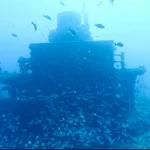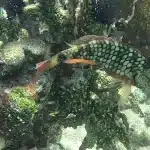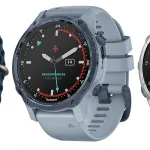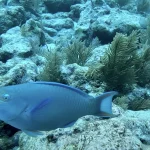Why Choose Key West for Scuba Certification
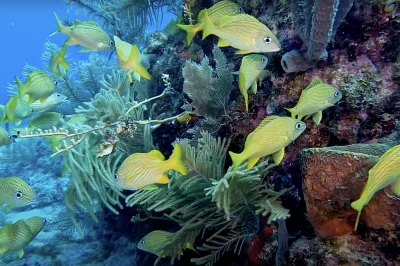
Table of Contents
- Why Choose Key West for Scuba Certification
- Your 4-Day Certification Plan Explained
- Common Misconceptions About Scuba Certification
- Avoiding Mistakes as a Beginner Diver
- Latest Trends in Scuba Diving Gear for Beginners
- How to Fund Your Scuba Certification
- Top Dive Sites in Key West for Beginners
- Post-Certification: Continuing Your Diving Journey
Introduction
Imagine diving into the crystal-clear waters of Key West and exploring vibrant marine life, shipwrecks, and coral reefs. Even if you’ve never dived before, you can get scuba certified in just four days. This blog post serves as your ultimate guide, offering practical advice and insights to ensure your scuba certification journey is smooth, engaging, and unforgettable.
Why Choose Key West for Scuba Certification
The PADI Open Water Diver certification process in Key West typically spans 3-5 days, but it can be effectively streamlined into a focused four-day schedule through efficient planning. Here’s a detailed breakdown of what to expect on each day of your journey to becoming a certified diver.
Day 1: Knowledge Development and Pool Training
- Online Academics: Complete the necessary online coursework prior to your arrival. This includes essential diving principles and safety protocols.
- Morning Pool Session: Engage in confined-water training, which covers critical skills, including:
- Equipment assembly and safety checks (BWRAF).
- Buoyancy control, regulator recovery, and mask-clearing drills.
- Emergency scenarios like free-flowing regulator breathing and controlled ascents.
Day 2-3: Open Water Dives
- Diving Schedule: Participate in two open-water dives each day, accessing Key West’s stunning tropical waters. Over these two days, you will:
- Rehearse essential skills such as navigation using a compass and landmarks.
- Practice buoyancy control with neutral ascents and descents.
- Demonstrate emergency procedures, which include simulated air supply exhaustion and alternate air source use.
- During these sessions, divers will be required to show proficiency in a total of 24 core skills.
Day 4: Final Dive and Certification
- Final Open-Water Dive: Conduct your fourth dive, focusing on consolidating skills such as underwater swimming and mask removal.
- Certification Issuance: After successfully completing all requirements, you will receive your PADI certification card.
- This final day is crucial for building confidence in the underwater environment.
Key West’s diving programs often feature a low student-to-instructor ratio, ensuring personalized attention throughout your training. Additionally, most providers, like the Key West Dive Center and Dive Key West, include all necessary equipment in their packages, making the certification process seamless and enjoyable.
Your 4-Day Certification Plan Explained
Common Misconceptions About Scuba Certification
Many aspiring divers encounter various misconceptions regarding the scuba certification process, which may deter them from pursuing this exhilarating activity. Addressing these myths is crucial for creating a clear understanding of what certification entails.
1. Swimming Ability Requirements
One of the most prevalent myths is that you need to be a strong swimmer to get certified. In truth, basic water skills—such as floating, using equipment, and being comfortable in the water—are all that’s required. Overexerting yourself while swimming can actually hinder your dive experience. Certified instructors focus more on water confidence and efficiency rather than athletic prowess.
2. Physical Limitations
- Age: Contrary to popular belief, scuba diving isn’t just for the young. Many older adults can enjoy the sport, and adaptive techniques make it accessible for those with disabilities.
- Body Type: Wetsuits are available in various sizes and shapes, meaning that people of all body types can dive comfortably. Training emphasizes buoyancy control, not physical appearance.
3. Certification Lifespan and Renewal
Another myth surrounds the validity of scuba certifications. Most certifications are lifelong, allowing divers to enjoy the depths for many years. However, it is recommended to take refresher courses, like PADI’s ReActivate program, if you haven’t dived in over six months.
4. Time to Certify
A common misconception is that becoming certified takes a long time. In reality, most certification courses can be completed in as little as three days, particularly when combining online learning with hands-on training.
5. Misconceptions About Equipment and Safety
- Oxygen Content: Many people worry about oxygen levels; however, most scuba tanks contain about 21% oxygen, akin to atmospheric air. Pure oxygen is rarely used in recreational diving.
- Safety: Diving is statistically safer than many activities when proper training is followed. Risks typically arise from negligence, not the sport itself.
6. Activity Comparisons
Diving should not be confused with snorkeling. Snorkeling is primarily a surface activity involving minimal gear, while scuba diving provides an opportunity for deeper exploration with the necessary equipment and training.
By dispelling these myths, potential divers can approach the certification process with greater confidence, paving the way for a fulfilling diving experience that showcases the underwater wonders of places like Key West.
Common Misconceptions About Scuba Certification
As a beginner diver, avoiding common mistakes is essential to ensuring safety, enjoyment, and overall success in your scuba training. Each mistake can lead to significant challenges during your diving experience, but being aware of them allows you to prepare and navigate your training more effectively. Below are the common pitfalls new divers encounter and recommendations on how to recover quickly.
Rushing Through Training
- Pursuing the cheapest certification immediately: Opting for the lowest-priced Open Water Diver course often compromises the quality of instruction. This can result in gaps in safety training and understanding of dive theory.
- Skipping foundational experiences: Jumping into advanced activities, like underwater photography, before mastering basic skills such as buoyancy control can lead to dangerous situations. It’s essential to build a solid foundation before progressing.
- Accelerating course progression: Rushing through material and drills ultimately decreases retention and confidence. Taking your time ensures you absorb critical information necessary for long-term proficiency.
Communication & Preparation
- Neglecting to ask questions: Failing to clarify concerns during training can lead to confusion. Don’t hesitate to reach out to instructors if you’re unsure about techniques or procedures.
- Overlooking pre-dive checks: Always conduct thorough safety checks, such as verifying air supply and equipment functionality, before each dive to minimise risks.
- Rushing equipment adjustments: Making abrupt changes to your buoyancy compensator (BCD) or depth can disrupt your balance underwater. Take gradual steps when adjusting your gear.
Underwater Awareness
- Ignoring gauge monitoring: Regular checks of your air supply and depth are crucial. Neglecting this can lead to emergencies. Stay engaged with your gauges to ensure safe diving practices.
- Disregarding dive group cohesion: Stay close to your dive group. Wandering off or engaging in solo activities can increase risks and complicate emergency responses.
Equipment & Mentality
- Not investing in quality personal gear: Using mismatched or poorly fitted equipment complicates buoyancy management and overall safety. Invest in gear that suits your size and diving style.
- Equalising ears late or infrequently: Failing to equalise pressure early can lead to discomfort and complications. Regularly practice equalisation techniques to prevent pain and maintain comfort.
By addressing these common mistakes and being proactive in your training, you can significantly enhance your diving experience and skills.
Avoiding Mistakes as a Beginner Diver
Latest Trends in Scuba Diving Gear for Beginners
For beginners entering scuba diving in 2025, the latest trends emphasise smart technology, sustainability, and user-friendly designs. Here’s a breakdown of essential gear and emerging trends:
Essential Gear for Beginners
- Smart Dive Computers
Modern entry-level models like the Cressi Raffaello (£349.95) feature large backlit displays, intuitive interfaces, and basic compass functionality. They support nitrox, multi-gas diving, and freediving while storing up to 60 dives. Expect AI integration for real-time feedback and smartphone syncing for dive logs. - Eco-Friendly Basics
Manufacturers are prioritising recycled materials and biodegradable packaging. It’s wise for beginners to select masks, fins, and snorkels made from sustainable plastics or plant-based polymers. - Lightweight, Travel-Friendly Gear
Compact, ultralight BCDs and regulators significantly reduce bulk. The Akona Mesh Sun Shirt (£58–£69) offers SPF 50+ protection, moisture-wicking fabric, and breathable mesh for comfort during surface intervals.
Emerging Trends for Beginners
- Simplified Buoyancy Control
New accessories like the Nexmulti Functiontrim Bar (MFT) (£12/3-pack) allow beginners to customise attachment points for weights or clips, improving gear organisation without added complexity. - Wearable Tech Integration
Devices like the Apple Watch Ultra may integrate dive metrics (e.g., heart rate, depth tracking) for real-time health and safety monitoring. - Budget-Friendly Customisation
Affordable modular systems enable divers to add features like underwater communication or digital compasses as skills progress.
Key Considerations
| Category | Top Recommendation | Price Range |
|---|---|---|
| Dive Computer | Cressi Raffaello | £349.95 |
| Protective Gear | Akona Mesh Sun Shirt | £58–£69 |
| Accessories | Nexmulti MFT | £12 (3-pack) |
Beginners should focus on basic gear first, then gradually adopt advanced tech as familiarity grows. It is essential to prioritise brands offering durable, eco-conscious designs to balance cost and sustainability.
Latest Trends in Scuba Diving Gear for Beginners
Funding Scuba Certification Courses
To fund scuba certification, consider these strategies supported by industry resources and community insights:
Scholarships and Grants
- Women Divers Hall of Fame (WDHOF): Offers grants of £1,000 for training, including certifications for those needing financial assistance. Specific grants target young women (ages 13–21).
- Rolex/Our World-Underwater Scholarships: Provide up to £25,000 for undergraduates pursuing underwater careers, including diving-related fields.
- Annual Renewal: Many grants recur yearly, so missed deadlines may reappear the following year.
Cost-Saving Locations
- Utila or Roatan (Honduras): Known for affordable Divemaster courses, these destinations cater to budget-conscious students.
- Koh Tao (Thailand): Example of low-cost certification hubs, with package deals including accommodation and equipment.
Discounts and Packages
- Bundle Courses: Dive shops often discount advanced certifications (e.g., PADI Advanced Open Water) when booked with entry-level courses.
- Negotiate Rates: Inquire about group discounts or promotions during off-peak seasons.
Financial Aid and Work-Exchange
- Commercial Diving Schools: Some offer financial aid programs or payment plans for higher-level certifications like Divemaster.
- Career Entry Programs: Few companies directly fund training, but commercial diving schools may provide structured paths into professional diving careers.
How to Fund Your Scuba Certification
Top Dive Sites in Key West for Beginners
Key West is known for its stunning underwater landscapes and vibrant marine life, making it a popular destination for scuba divers—especially beginners. Here are the top dive sites that are both welcoming to novices and rich in natural beauty, ensuring a memorable experience.
Sambos Reefs
The Sambos Reef system is a prime spot for beginner divers, consisting of two sections:
- Middle Sambo: This site has an average depth of approximately 35 feet (10.5 metres) and is teeming with marine life such as lobsters and tarpon, alongside colourful coral formations.
- Western Sambo: With a maximum depth of 30 feet (9 metres), this area is also home to diverse corals and features the Cannonball Cut, a spot known for its small tugboat wreck and spiny lobsters.
Sand Key
Located about 7 miles southwest of Key West, Sand Key boasts depths that typically range from 35 to 75 feet (11 to 23 metres). The key points about Sand Key include:
- Shallow areas that are accessible for beginners, allowing for safe and enjoyable diving experiences.
- The site is highly regarded for snorkeling as well, providing a chance to see a plethora of marine species in crystal-clear waters.
Western Dry Rocks
This site is a lesser-known gem that offers a more relaxed diving experience. It features:
- Suitable depths for beginners, ensuring a less intimidating dive while still encountering stunning marine life.
- A relatively uncrowded environment that allows for a more tranquil underwater journey.
When planning your dive, joining tours such as the Key West Afternoon 2-Tank Reef Scuba Dive can help ensure safety and guidance as you explore these incredible locations. It’s advisable to avoid deeper wreck dives like the Vandenberg (approximately 130 feet) and Cayman Salvage (67-93 feet), which are more suited for experienced divers.
Top Dive Sites in Key West for Beginners
After earning your PADI Open Water Diver certification, you can significantly enhance your diving journey through structured progression, practical experience, and specialised training. Here’s a breakdown of post-certification pathways:
Gaining Practical Experience
- Dive frequently and explore diverse environments like coral reefs, shipwrecks, or freshwater lakes to build confidence and adaptability.
- Log dives to meet requirements for advanced courses, such as Rescue Diver (at least 20 dives) or Divemaster (40+ dives).
Specialised Training
PADI offers specialty courses tailored to specific interests:
- Deep diving or wreck diving for technical skill development.
- Underwater photography or fish identification to expand knowledge.
- Enriched air (nitrox) for safety and extended bottom time.
Advanced Certifications
- Rescue Diver: Teaches emergency response skills, such as managing panic or assisting injured divers.
- Advanced Open Water: Provides deeper training in navigation, buoyancy, and situational awareness.
Professional Pathways
For those aiming to turn diving into a career:
- Divemaster: The first leadership certification, requiring Rescue Diver, CPR/First Aid, and 40+ dives. Focuses on guiding divers, managing risk, and site mapping.
- Instructor: Attainable after Divemaster, requiring 60+ dives to start and 100+ dives upon course completion. Involves teaching open-water courses and business strategies.
Key Requirements
| Certification | Prerequisites | Dives Required |
|---|---|---|
| Rescue Diver | Advanced Open Water, Medical clearance | 20+ |
| Divemaster | Rescue Diver, CPR/First Aid | 40+ |
| Instructor | Divemaster, EFR certification | 100+ |
By combining technical training, practical diving, and professional development, you can tailor your progression to match personal or career goals.
Post-Certification: Continuing Your Diving Journey
Core Certification Steps
The scuba certification process in Key West typically involves a structured approach combining online learning, pool training, and open-water dives. Here’s a breakdown of the essential steps:
- Online Academic Work
Begin by completing the PADI Open Water eLearning materials remotely before arriving in Key West. This program covers fundamental principles such as buoyancy, safety, and dive planning, effectively saving classroom time and accelerating your learning journey.
- Confined Water Training (Pool Session)
- Morning Pool Session: Engage in practice sessions to develop essential scuba skills, including equipment assembly, buoyancy control, and emergency procedures like regulator recovery.
- 24-Skill Circuit: Master key techniques such as pre-dive safety checks (remember BWRAF: BCD, Weight, Releasing air, Air, Final check), maintaining neutral buoyancy, and executing controlled emergency ascents.
- Open-Water Dives
Conduct four guided dives in the stunning coral reefs of Key West, applying the skills learned during pool training in real-world conditions. Experienced instructors maintain a low student-to-instructor ratio, ensuring personalized guidance throughout the dives.
Certification Options
| Type | Duration | Key Features |
|---|---|---|
| Full Open Water Certification | 3–5 days | Combines online academics, pool training, and four open-water dives. |
| Discover Scuba (Introductory) | 1 day | A trial course with pool training followed by a guided ocean dive, which can count as credit toward full certification if you choose to continue. |
Additional Details
High-quality gear is provided, along with comprehensive instruction in equipment assembly and usage. Upon successful completion, the PADI Open Water certification is recognized globally, allowing dives down to 60 feet. For those who wish to pursue further training, various centres also offer Divemaster programs, although this falls outside the beginner curriculum.
Sources
- Key West Dive Center – Diving Certifications
- Key West Scuba Diving – PADI Certification
- Dive Key West – Instruction
- PADI – Top 10 Scuba Diving Myths
- Deep Blue Dive Center – Common Misconceptions About Becoming a Scuba Diver
- The Dive Shop – Scuba Questions and Myths
- Business of Diving – Mistakes New Scuba Divers Make
- Siladen Resort – 7 Mistakers to Avoid During Your First Dive Course

